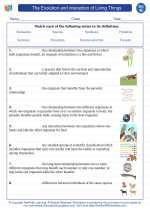The Evolution and Interaction of Living Things
In the study of biology, the concept of evolution and the interaction of living things is fundamental to understanding the diversity of life on Earth. This topic encompasses the mechanisms of evolution, the processes of natural selection, and the ways in which living organisms interact with each other and their environment.
Mechanisms of Evolution
Evolution occurs through various mechanisms, including natural selection, genetic drift, gene flow, and mutations. These mechanisms lead to changes in the genetic makeup of populations over time, resulting in the diversity of life forms we see today.
Natural Selection
Natural selection is the process by which organisms with favorable traits are more likely to survive and reproduce, leading to the gradual adaptation of populations to their environments. This process is driven by environmental pressures and competition for resources.
Genetic Drift
Genetic drift refers to random changes in the frequency of certain traits within a population, often due to chance events. It can lead to the loss of genetic diversity and the fixation of certain traits in a population.
Gene Flow
Gene flow occurs when individuals or their genetic material move between different populations, leading to the exchange of genetic diversity. This can influence the genetic makeup of populations and contribute to evolutionary change.
Mutations
Mutations are the ultimate source of genetic variation, providing the raw material for evolution. They can occur spontaneously and lead to the introduction of new traits within a population.
Interactions of Living Things
Living organisms interact with each other and their environment in various ways, including competition, predation, symbiosis, and ecological relationships. These interactions play a key role in shaping ecosystems and the distribution of species.
Competition
Competition occurs when individuals or species vie for the same resources, such as food, water, or shelter. This can lead to the adaptation of species and the coexistence of different organisms within an ecosystem.
Predation
Predation involves the consumption of one organism (the prey) by another (the predator). This interaction can influence the population dynamics of species and contribute to the balance of ecosystems.
Symbiosis
Symbiotic relationships involve interactions between different species, where both parties benefit. Examples include mutualism, where both species benefit, and commensalism, where one species benefits while the other is unaffected.
Ecological Relationships
Various ecological relationships, such as parasitism, herbivory, and pollination, play a crucial role in the functioning of ecosystems and the maintenance of biodiversity.
Conclusion
Understanding the mechanisms of evolution and the interactions of living things is essential for grasping the complexity of life on Earth. By studying these concepts, we gain insights into the processes that have shaped the natural world and continue to drive the diversity of living organisms.
.◂Science Worksheets and Study Guides Eighth Grade. The Evolution and interaction of Living Things

 Worksheet/Answer key
Worksheet/Answer key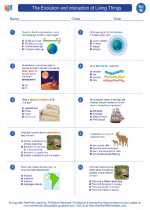
 Worksheet/Answer key
Worksheet/Answer key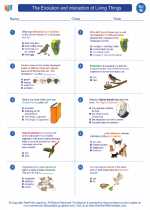
 Worksheet/Answer key
Worksheet/Answer key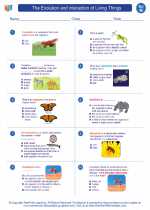
 Vocabulary/Answer key
Vocabulary/Answer key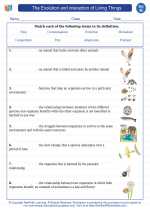
 Vocabulary/Answer key
Vocabulary/Answer key